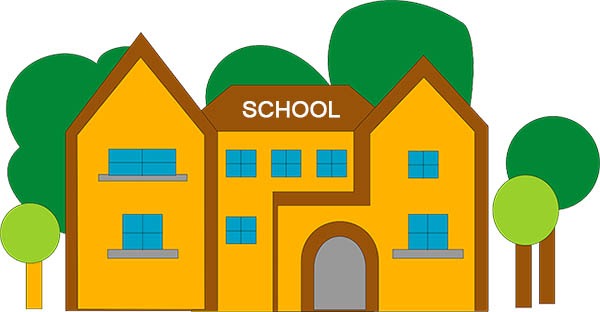Green school
COURTESY : www.centerforgreenschools.org/
green school is about more than curriculum, more than programming and more than bricks and mortar. It’s a school that supports global sustainability in every way. A green school begins with the future in mind, designing a learning experience for students that will prepare them to lead the world toward a healthier, cleaner, more sustainable future.
The Whole School Sustainability framework describes what successful green schools have learned about how to make this sustainability thinking stick. It explains that, in these schools, the educational program, physical place and organizational culture all support sustainability, and that each aspect of the school does its important part in making the whole picture work.
So, how do we know if it’s working? This is where the three pillars of a green school come in. While the Whole School Sustainability framework describes what a green school looks like, the three pillars of a green school explain how to measure progress. The three pillars were first introduced when the U.S. Department of Education launched the ED-Green Ribbon Schools award program in 2011. Since then, over 60 organizations have adopted the basic measurement framework that they present:
- Reduced environmental impact
- Increased health and well-being
- Increased environmental and sustainability literacy for all graduates
These three pillars are the measurable success metrics for green schools, and they make a real impact on both global sustainability and individual student and teacher health.
Environmental impact
Reducing environmental impact includes reducing energy and water use, cutting back on fossil fuel used in transportation, reducing waste headed to landfill and protecting natural habitats. These actions have an effect on humans and the Earth:
- We know that cutting energy usage in buildings reduces energy load on power plants, reducing carbon emissions and other environmental impacts of power generation.1
- We know that cutting water usage in buildings reduces aquifer depletion,2 protects freshwater habitats and reduces the energy used to treat and transport water.3
- We know that reducing waste going to landfill saves open land for habitat and other purposes and reduces water and soil contamination. We also know that the effort of reducing landfill waste encourages direct reuse and puts more material in the recycling stream.4,5
- We know that reducing car trips made by a single rider cuts back on carbon emissions from transportation.6
Health and well-being
Protecting student and teacher health includes ensuring a clean and healthy indoor environment in the school, as well as providing programs and services for good nutrition and physical activity. Paying attention to health in schools has an impact on well-being and learning:
- We know that specific aspects of indoor air quality—such as the amount of CO2, VOCs, particulates and humidity in the air—have demonstrable impacts on student learning and human health more generally.7,8
- We know that access to clean and safe drinking water can increase water intake, which benefits overall health.9,10 We also know that lead contamination in water has demonstrable impacts on cognitive development, attention and behavior, as well as a variety of impacts on physical health.11
- We know that exposure to daylight affects the production of important hormones that impact alertness and sleep/wake cycles.12
- We know that increasing the number of servings of whole grains, fruit and vegetables that students eat has positive impacts on their health, well-being and ability to learn.13,14
- We know that increasing the amount of physically active time that each student experiences during the school day can cut obesity rates and encourage positive lifetime habits.15
Environmental and sustainability literacy
Teaching students about sustainability and the environment gives them the tools they need to solve the global challenges we face now and in the future. Education that supports this type of literacy includes both curriculum and instructional practices that are interdisciplinary, place-based and rooted in the context that uniquely surrounds each student. This education impacts student understanding and action:
- We know that increasing students’ environmental knowledge while also employing instructional practices that focus on interdisciplinary and place-based problem solving can influence behavior change toward sustainability.16,17
- We know that students for whom the environment is a context for learning perform better on measures of general academic performance.18



